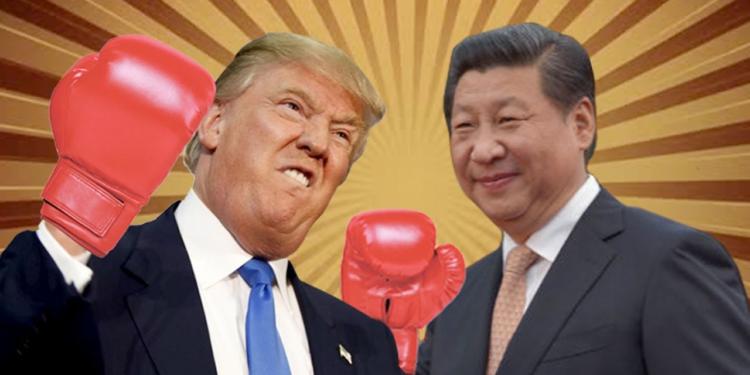Donald Trump’s words cannot be taken on face value, but one area where you can be sure that Trump will do whatever he promises is the trade war.
The Chinese economy is in troubled waters thanks to the US president’s repeated increase in tariffs on imports. In the latest step to hurt the Chinese exports, Trump has announced an additional 10 percent tariff on 300 billion dollars goods coming from China. This is in addition to 25 percent tariff already in place on 250 billion dollars Chinese goods and services.
“China agreed to buy agricultural product from the U.S. in large quantities, but did not do so. Additionally, my friend President Xi said that he would stop the sale of Fentanyl to the United States – this never happened, and many Americans continue to die! Trade talks are continuing, and during the talks the U.S. will start, on September 1st, putting a small additional Tariff of 10% on the remaining 300 Billion Dollars of goods and products coming from China into our Country. This does not include the 250 Billion Dollars already Tariffed at 25%…,” tweeted Trump.
…during the talks the U.S. will start, on September 1st, putting a small additional Tariff of 10% on the remaining 300 Billion Dollars of goods and products coming from China into our Country. This does not include the 250 Billion Dollars already Tariffed at 25%…
— Donald J. Trump (@realDonaldTrump) August 1, 2019
The announcement of tariffs hit the American and Asian markets. The oil prices also plummeted by 7 percent, this is the highest fall in the last few months. The Shanghai Composite Index of China registered 1.43 percent decline in last trading session while Japanese Nikkei was down by 2.11 percent.

Trump is not pleased by the progress on trade talks and this was the reason behind increase in tariffs. The US has a trade deficit of almost 700 billion dollars of which China accounts for almost half. Imposing import tariffs is rebalancing the trade relations of US with countries like China, Japan, Germany, Mexico and others. Trump is vehemently opposed to the current trade relations between America and China because they are heavily skewed in favor of China.
In 2016, China was the largest goods trading partner with 578.2 billion dollars in total (two way) goods trade during 2016. Goods exports totaled 115.6 billion dollars; goods imports totaled 462.6 billion dollars. The U.S. goods trade deficit with China was 347.0 billion dollars in 2016. Trump was opposed to the fact that the Asian economy deliberately keeps the value of its currency low, therefore, making its exports more competitive in the international market. The American manufacturers were losing to the Chinese because the labor was cheap there, and goods produced in America have become uncompetitive.
China has very little room left to increase the tariffs as the total American exports to the dragon is only 130 billion dollars and it has imposed tariff on 110 billion dollars. When US imposed tariffs of 25 percent on imports worth 50 billion dollars, China reciprocated with same tariffs on the same amount of trade.
Later, when an enraged Trump imposed tariff of 10 percent on 200 billion dollars then China imposed tariff of 5 to 10 percent on import worth 60 billion dollars. To retaliate, Trump increased the tariff on 200 billion dollars good from 10 percent to 25 percent. But China is not able to impose further tariff as very little scope for the same is left while US could impose tariff on imports of another 300 billion dollars and now Trump has gone for that. After the 10 percent tariff comes into effect in September, almost every Chinese product entering in United States will be taxed.
The Chinese economy is facing a double whammy as domestic consumption is slowing down and exports are poised to hit due to trade war. The control freak Communist regime needs to make some outstanding efforts to redeem the economy. Stimulus announced by the government did not yield any positive impact for the economy, therefore, Chinese Communist Party run government needs to look for alternatives to avoid further reduction in growth.































